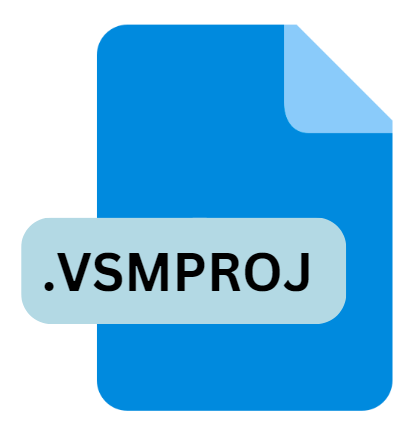.VSMPROJ File Extension

Visual Studio Text Macro Project
| Developer | Microsoft |
| Popularity | |
| Category | Developer Files |
| Format | .VSMPROJ |
| Cross Platform | Update Soon |
What is an VSMPROJ file?
In the realm of software development, efficiency is paramount. Developers often find themselves repeating mundane tasks, such as code formatting or snippet insertion.
Recognizing this need, Microsoft introduced Visual Studio Text Macros, a feature allowing users to record and replay sequences of commands within Visual Studio IDE.
These macros, encapsulated in files with the .VSMPROJ extension, offer a streamlined approach to automate repetitive tasks, enhancing productivity and reducing developer fatigue.
More Information.
The concept of macros in software development predates Visual Studio. However, Microsoft introduced a more user-friendly and integrated approach with Visual Studio Text Macros.
These macros enabled developers to record a series of actions performed within the IDE and replay them later, automating tasks like code generation, refactoring, and navigation.
Initially, .VSMPROJ files served as containers for storing recorded macro sequences. Developers could create, edit, and execute macros directly within Visual Studio, streamlining their workflow and boosting productivity.
The ability to customize macros according to specific project requirements further enhanced their utility.
Origin Of This File.
The .VSMPROJ file extension traces its roots back to Microsoft Visual Studio, an integrated development environment (IDE) widely utilized for building applications across various platforms.
Visual Studio, introduced in 1997, quickly gained popularity among developers due to its rich feature set and robust capabilities.
Among its plethora of features, text macros emerged as a powerful tool for automating repetitive tasks, leading to the creation of .VSMPROJ files.
File Structure Technical Specification.
.VSMPROJ file is essentially an XML-based project file that encapsulates the macro code and associated metadata. The structure of these files typically includes:
- Header Information: Contains metadata such as the macro name, description, author, and version.
- Macro Code: The core of the .VSMPROJ file, comprising the recorded actions and commands in a script-like format. This code instructs Visual Studio on how to execute the macro.
- Supporting Files: Optionally, a .VSMPROJ file may reference external files or dependencies required for macro execution.
- Configuration Settings: Specifies any settings or parameters associated with the macro.
The .VSMPROJ file structure is designed for ease of editing and manipulation, allowing developers to fine-tune macros to suit their specific needs.
How to Convert the File?
Converting .VSMPROJ files to other formats or vice versa is not a straightforward process due to the proprietary nature of Visual Studio’s macro system. Developers can achieve similar automation capabilities using alternative methods such as:
- Visual Studio Extensions: Modern versions of Visual Studio offer extensions and add-ins that provide similar functionality to macros, often in a more user-friendly and maintainable manner.
- External Automation Tools: Third-party automation tools and scripting languages like PowerShell can be used to automate tasks outside the Visual Studio environment, offering flexibility and cross-platform compatibility.
- Manual Replication: For simple tasks, developers may opt to manually replicate the desired actions without relying on macros or automation tools.
Advantages And Disadvantages.
Advantages:
- Increased Productivity: Automating repetitive tasks reduces manual effort and allows developers to focus on more creative aspects of coding.
- Consistency: Macros ensure uniformity in code formatting, layout, and structure across projects, enhancing readability and maintainability.
- Customization: Developers can tailor macros to their unique requirements, incorporating project-specific logic and functionality.
- Time Savings: By streamlining common tasks, .VSMPROJ files help expedite the development process, leading to faster project delivery.
Disadvantages:
- Platform Dependency: Macros recorded in Visual Studio may not be compatible with other IDEs, limiting their portability.
- Maintenance Overhead: As projects evolve, macros may require updates or modifications to remain effective, adding to maintenance overhead.
- Debugging Complexity: Debugging macros can be challenging, particularly for complex sequences or those involving external dependencies.
- Security Risks: Malicious macros pose a security risk, as they can execute arbitrary commands within the IDE environment.
How to Open VSMPROJ?
Open In Windows
- Microsoft Visual Studio: .VSMPROJ files are native to Microsoft Visual Studio. Simply double-clicking the file should open it directly within Visual Studio.
- Visual Studio Code: Although Visual Studio Code doesn’t directly support .VSMPROJ files, you can open the file to view its contents. However, to edit and execute the macros, you’ll need to use Microsoft Visual Studio.
Open In Linux
- MonoDevelop: MonoDevelop is an open-source IDE that provides limited support for Visual Studio macros. While compatibility may vary, you can attempt to open .VSMPROJ files in MonoDevelop and see if the macros can be executed.
- Wine: Wine is a compatibility layer that allows running Windows applications on Linux. You can try running Microsoft Visual Studio through Wine to open and execute .VSMPROJ files.
Open In MAC
- MonoDevelop: As with Linux, MonoDevelop may offer limited support for opening and executing .VSMPROJ files on macOS.
- Virtual Machine: You can use virtualization software like Parallels Desktop or VMware Fusion to run a Windows virtual machine on macOS. Install Microsoft Visual Studio within the virtual machine to open and work with .VSMPROJ files.













